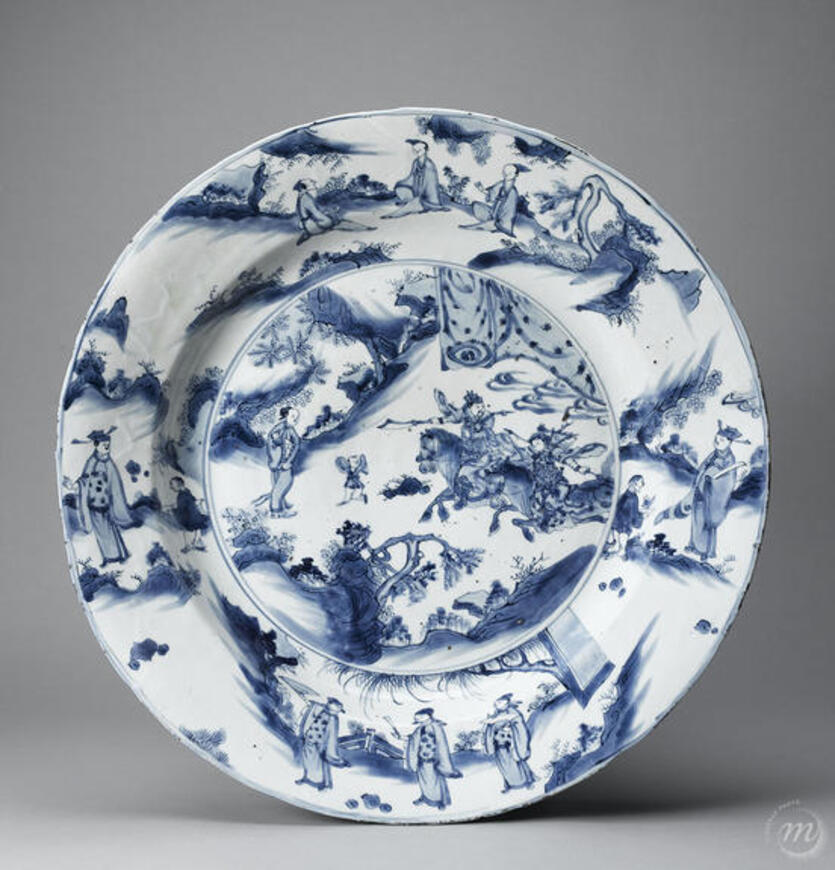This large plate presents characters in traditional costume, going about their business in a landscape of rocks and trees. It was created during the reign of the famous Ming dynasty. This dynasty produced the most beautiful blue and white porcelain pieces that we know today. Some pieces, having passed into Europe via the Near East, fascinated the Europeans, who then tried to reproduce this technique. Explanations …
The only colour used in Ming porcelain is blue, as only cobalt oxide – which creates the colour blue upon firing – can withstand temperatures of 1,200°C, necessary for porcelain production. It is made of kaolin, a white clay whose name is derived from Gaoling, the mountain on which its largest deposit was found, and "petuntse". "Petuntse" turns to liquid during firing and forms a shiny coating or glaze on the surface of the piece.
Good-quality porcelain must be perfectly white and very fine, even translucent, but it must also be solid enough that even a steel nail cannot scratch it!
The Europeans would take several centuries to uncover the secrets of porcelain. In particular, the Delft factories in the Netherlands sought to imitate Ming porcelain using white ceramic and blue decorations. The Lille Palais des Beaux-Arts houses a fantastic example of these imitations with the Delft plate.
Detail 1: The characters on either side of the central scene wear winged hats known as "Wu sha mao", traditional in the Ming period. This detail identifies them as civil servants.
Detail 2 : The central scene depicts two knights in armour galloping into the field. A small, happy boy raises his arms as they pass by!

This large plate presents characters in traditional costume, going about their business in a landscape of rocks and trees. It was created during the reign of the famous Ming dynasty. This dynasty produced the most beautiful blue and white porcelain pieces that we know today. Some pieces, having passed into Europe via the Near East, fascinated the Europeans, who then tried to reproduce this technique. Explanations …
The only colour used in Ming porcelain is blue, as only cobalt oxide – which creates the colour blue upon firing – can withstand temperatures of 1,200°C, necessary for porcelain production. It is made of kaolin, a white clay whose name is derived from Gaoling, the mountain on which its largest deposit was found, and "petuntse". "Petuntse" turns to liquid during firing and forms a shiny coating or glaze on the surface of the piece.
Good-quality porcelain must be perfectly white and very fine, even translucent, but it must also be solid enough that even a steel nail cannot scratch it!
The Europeans would take several centuries to uncover the secrets of porcelain. In particular, the Delft factories in the Netherlands sought to imitate Ming porcelain using white ceramic and blue decorations. The Lille Palais des Beaux-Arts houses a fantastic example of these imitations with the Delft plate.
Detail 1: The characters on either side of the central scene wear winged hats known as "Wu sha mao", traditional in the Ming period. This detail identifies them as civil servants.
Detail 2 : The central scene depicts two knights in armour galloping into the field. A small, happy boy raises his arms as they pass by!